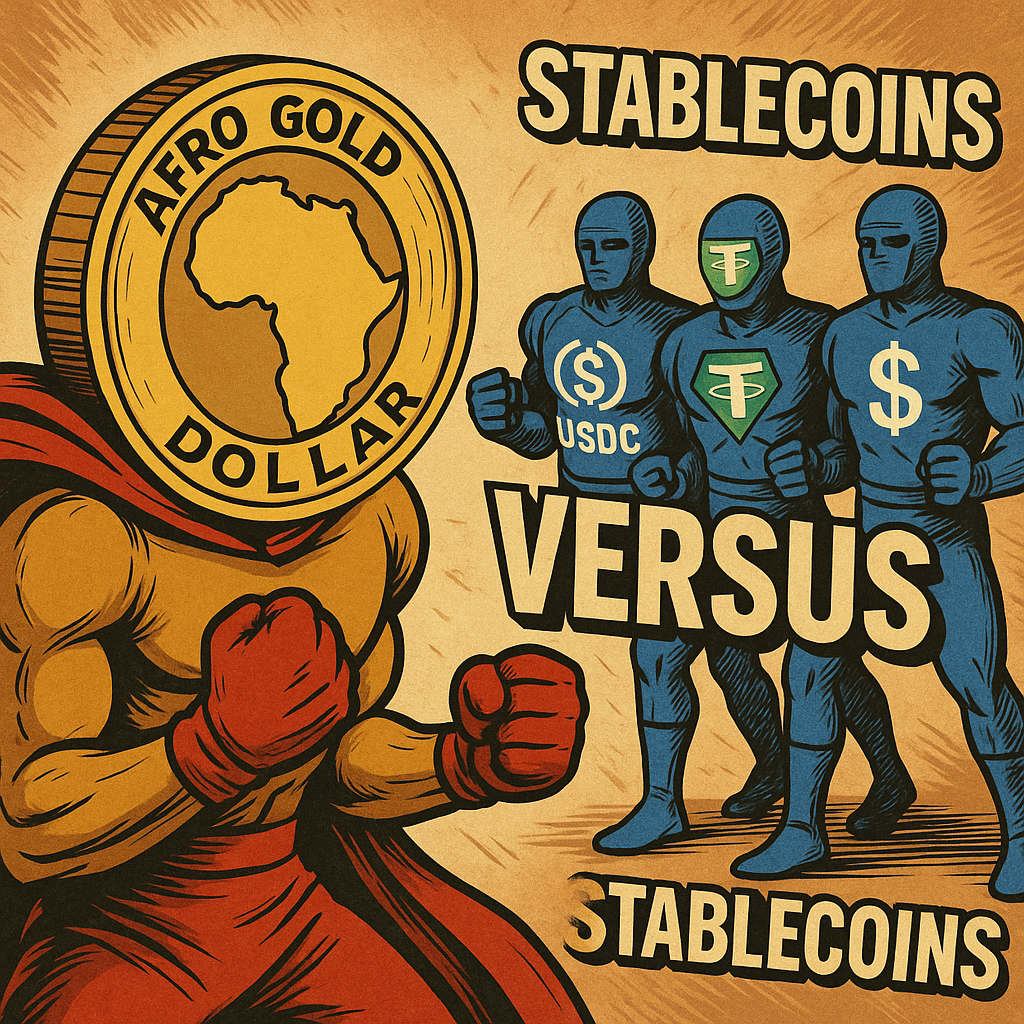
How Afro Gold Dollar plans to take on the Giants.
The future of money isn’t just about technology—it’s about geopolitics. Countries aren’t choosing between CBDCs (Central Bank Digital Currencies) and stablecoins in a vacuum. Their decisions are shaped by what’s in the ground beneath their feet and the numbers on their national balance sheets.
Resource-Rich Nations: Guarding Sovereignty with CBDCs
If you’re sitting on oil, copper, or gold, you already have leverage. Your exports generate hard currency, and your reserves give you monetary muscle. For these nations, the risk isn’t running out of money—it’s losing control.
Enter CBDCs. By launching a digital currency controlled by the central bank, resource-rich states can:
- Keep resource rents circulating locally.
- Reduce reliance on the U.S. dollar in trade.
- Monitor and control domestic financial flows.
- Assert sovereignty over payment rails.
Think Nigeria’s eNaira, China’s digital yuan, or experiments in the Gulf states. For them, the play is clear: digitize the local currency before dollar stablecoins capture the market.
Debt-Heavy Nations: Stablecoins as a Debt Export Machine
Now flip the coin. Countries drowning in debt—like the United States, Japan, or parts of Europe—depend on constant bond issuance just to stay afloat. Stablecoins, especially dollar-backed ones like USDT and USDC, are a hidden blessing.
Every new stablecoin minted creates fresh demand for short-term government debt like T-Bills. In fact, stablecoin issuers are now among the largest buyers of U.S. government paper. Stablecoins don’t undermine U.S. power—they expand it, globalizing American debt by embedding it in the digital economy.
This explains the quiet tolerance: stablecoins keep the debt machine humming.
The Clash of Incentives
Here’s the tension:
- Resource-rich nations don’t want to be colonized again by dollar stablecoins. They prefer CBDCs to protect sovereignty.
- Debt-heavy nations want stablecoins to thrive—so long as they’re pegged to their debt-backed currency.
This is why the U.S. cheers dollar stablecoins, while China races to deploy the digital yuan. It’s why African nations are experimenting with CBDCs to avoid being trapped on U.S. rails.
The Next Frontier: Tokenized Commodities
But what happens if resource-rich countries decide to flip the script? Imagine Zambia issuing a copper-backed stablecoin, or Saudi Arabia tokenizing oil barrels on a blockchain. Suddenly, the U.S. wouldn’t just be exporting debt through stablecoins—it would be competing with tokenized reserves tied to hard assets.
That battle—debt-backed vs resource-backed digital money—could reshape the global financial system faster than most people expect.
Closing thought:
The divide is real. Resource-rich nations will likely lean on CBDCs to lock in sovereignty. Debt-heavy nations will push stablecoins to spread their obligations. But the real disruption will come when the two models collide—and when commodities, not Treasuries, start backing the next wave of global money.
Leave a Reply